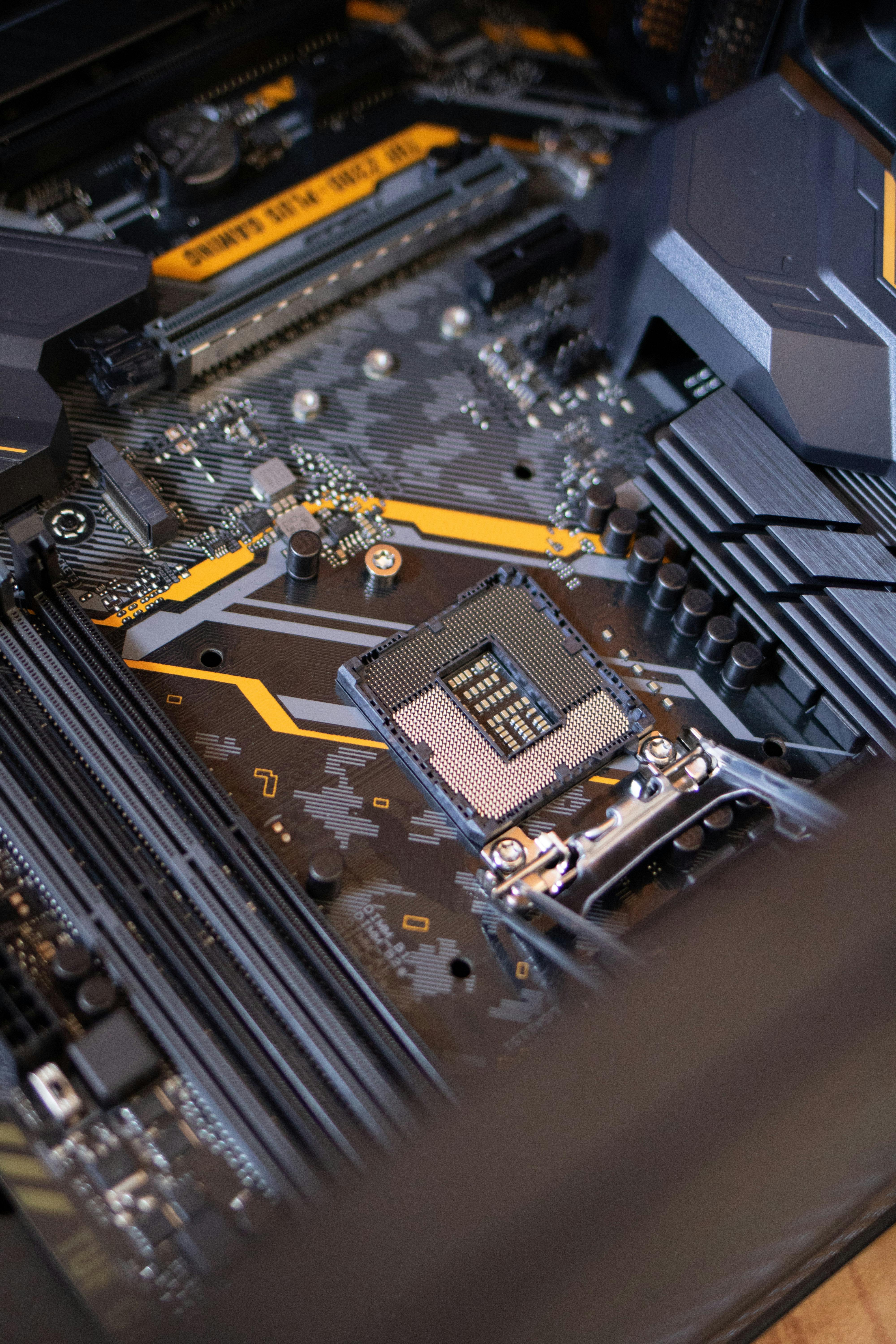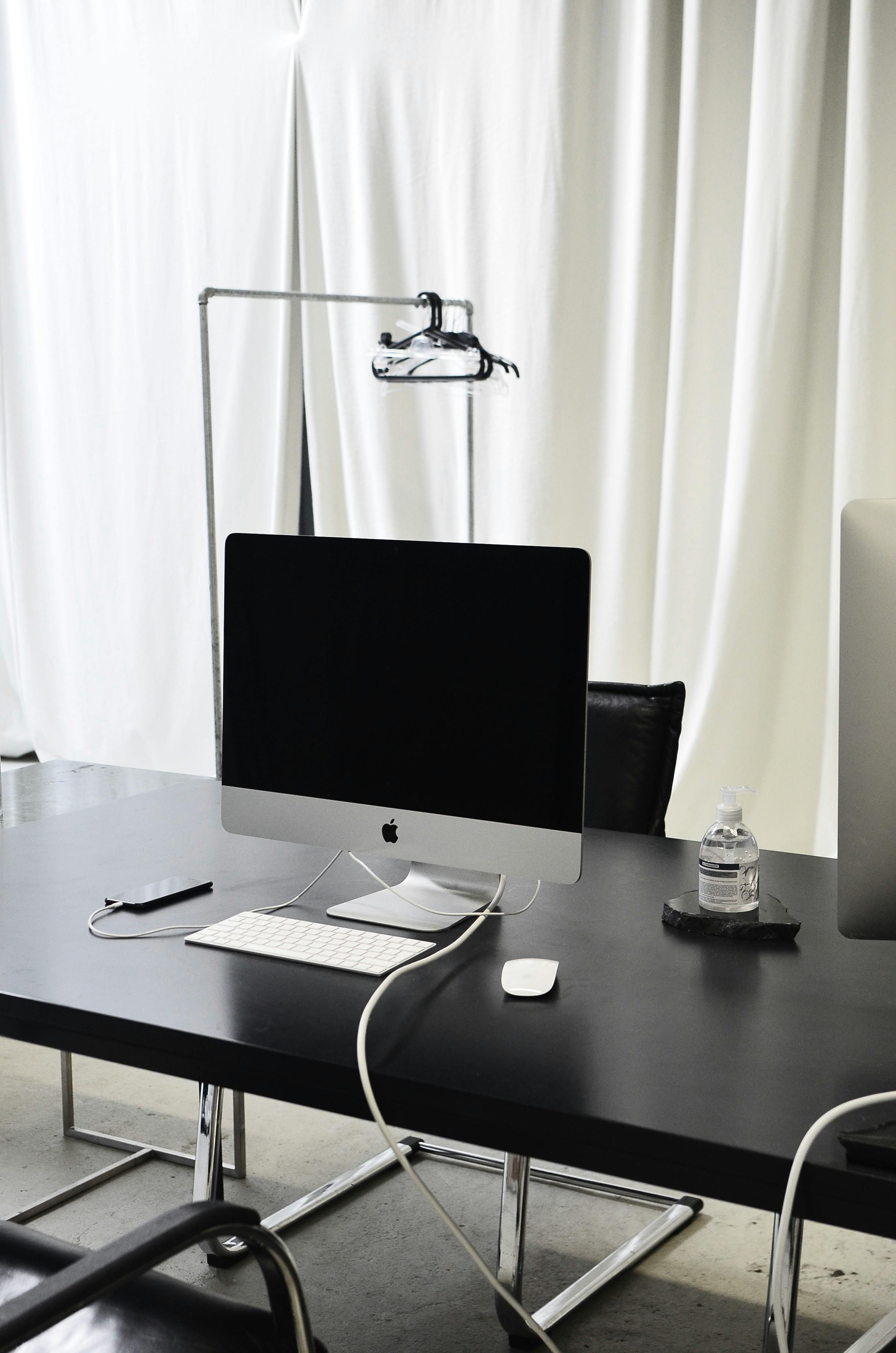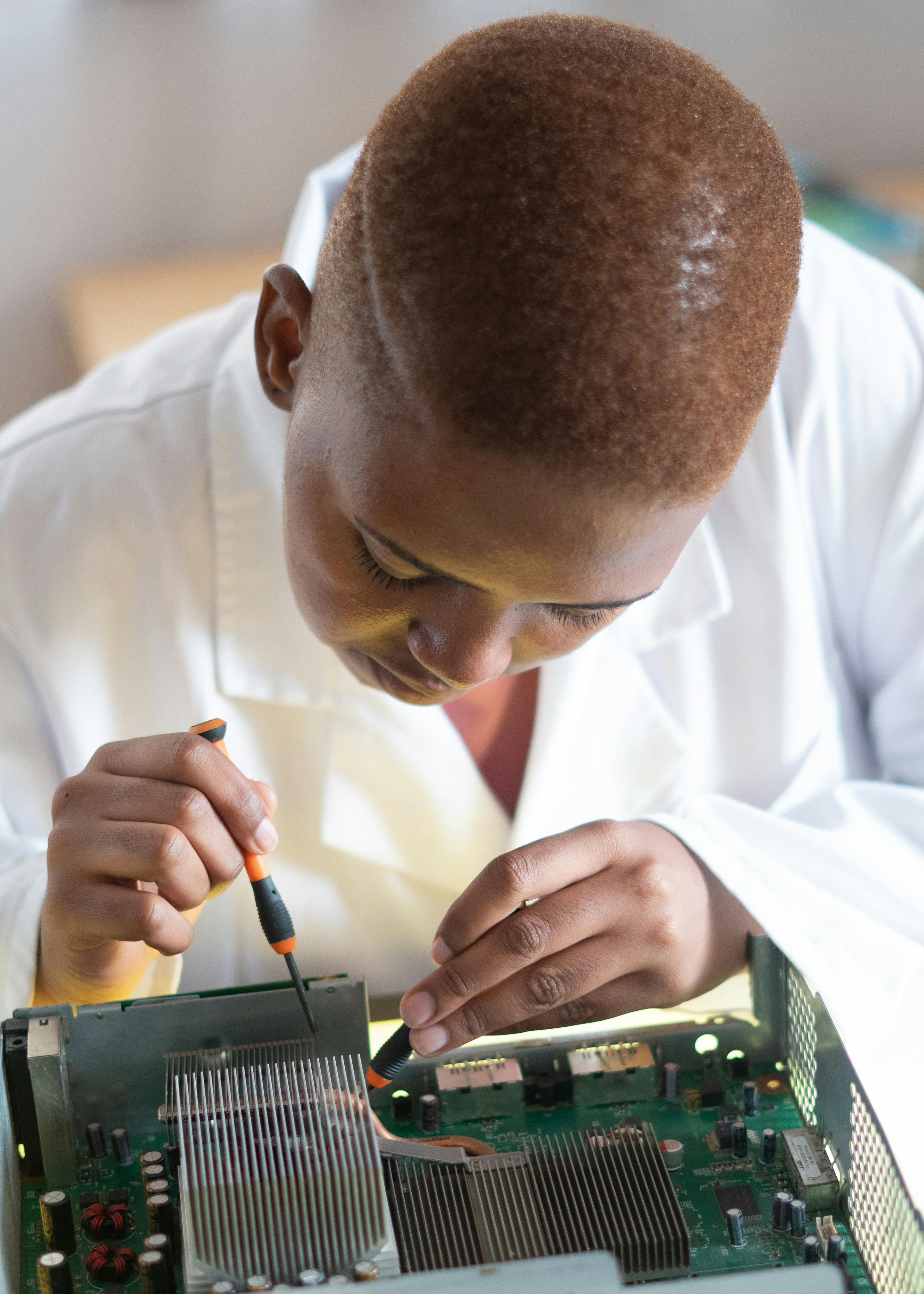Identifying Hardware Malfunctions
Hardware malfunctions can be frustrating and disruptive, but with the right troubleshooting techniques, you can quickly identify and resolve the root cause. By paying attention to common signs of hardware malfunctions, you can save yourself time and effort in diagnosing the issue.
Common signs of hardware malfunctions
Keep an eye out for warning signs such as sudden crashes, freezing or slow performance, abnormal noises, or error messages popping up on your screen. These can indicate a hardware problem that needs attention.
The importance of identifying the root cause
Identifying the root cause of a hardware malfunction is crucial to effectively resolving the issue. By pinpointing the source of the problem, you can determine whether it is a hardware or software-related issue, saving you from unnecessary troubleshooting and potential expenses.
Using diagnostic tools for identification
Diagnostic tools can greatly assist in identifying hardware malfunctions. They analyze your computer’s hardware components, running various tests to pinpoint the problematic area. Familiarize yourself with these tools and utilize them when troubleshooting hardware issues.
By taking the time to identify hardware malfunctions properly, you can efficiently resolve the problem and ensure your computer is running smoothly. This will save you both time and money in the long run.
Troubleshooting Hardware Malfunctions
When your hardware malfunctions, it can be a frustrating experience. However, there are several simple steps you can take to troubleshoot and fix the issue before seeking professional help. By following these basic troubleshooting steps, you can often identify and resolve the problem on your own.
Checking physical connections
Start by checking all the physical connections of your hardware. Make sure that cables are securely connected and not damaged. Sometimes, a loose or faulty connection can cause a malfunction. Additionally, check if any cables have been unplugged accidentally.
Testing individual hardware components
If the physical connections seem fine, the next step is to test each individual hardware component. Begin by disconnecting and reconnecting each component one by one to see if the issue is resolved. This can help identify which specific component is causing the malfunction.
Updating drivers and firmware
Another important step is to ensure that all your drivers and firmware are up to date. Outdated software can often lead to hardware malfunctions. Check the manufacturer’s website for the latest drivers and firmware updates, and install them as necessary.
Resetting BIOS settings
If none of the above steps have resolved the issue, you may need to reset your BIOS settings. This will revert your computer’s settings back to the default, which can sometimes resolve hardware malfunctions caused by incorrect settings.
By following these troubleshooting steps, you can often resolve hardware malfunctions on your own, saving time and money. However, if the issue persists, don’t hesitate to seek professional assistance to ensure proper repair.

This image is property of images.pexels.com.
## Troubleshooting Specific Hardware Malfunctions
Hard disk drive malfunctions
One common hardware issue you may encounter is a malfunctioning hard disk drive (HDD). If you notice your computer freezing or experiencing slow performance, it could be a sign of HDD problems. First, check the connections between the HDD and your computer’s motherboard, ensuring they are secure. You can also use disk diagnostic tools to identify any errors or bad sectors on the drive. If necessary, consider replacing the HDD with a new one.
Random Access Memory (RAM) issues
RAM issues can cause your computer to crash or become unresponsive. To troubleshoot RAM problems, start by reseating the RAM modules firmly into their slots on the motherboard. If the issue persists, try testing one module at a time to identify any faulty sticks. Additionally, you can use diagnostic software to check for errors in your RAM, and if needed, replace the faulty modules.
Graphics card problems
A malfunctioning graphics card can result in display issues, such as distorted or flickering screens. Start by ensuring the graphics card is properly seated in its slot on the motherboard. If the problem persists, try updating the graphics card drivers to the latest version. If that doesn’t work, you may need to replace the card with a new one.
Motherboard malfunctions
A malfunctioning motherboard can cause a range of issues, from random crashes to failed components. Check all connections between the motherboard and other hardware devices to ensure they are secure. If the problem persists, it may be necessary to consult a professional for further diagnosis and potentially replace the motherboard.
Power supply failures
A faulty power supply can lead to computer shutdowns, random restarts, or power-related issues. Begin by checking the connections between the power supply and other components, ensuring they are tightly secured. If the problem continues, you may need to replace the power supply unit (PSU) with a new one.
By troubleshooting specific hardware malfunctions, you can identify and resolve issues to optimize your computer’s performance and avoid further damage. Remember to follow the appropriate safety precautions and seek professional help when needed.
Software and Hardware Interactions
Software conflicts with hardware
One common cause of hardware malfunctions is software conflicts. When your software and hardware components don’t work together properly, it can lead to various issues. For example, a graphics card might not function correctly if it conflicts with certain software applications.
To troubleshoot this, start by checking for software updates. Ensure that all your software, including drivers and operating systems, are up to date. If the problem persists, try disabling any recently installed software to see if that resolves the issue. It’s also a good idea to check for known compatibility issues between your hardware and software.
Driver compatibility issues
Outdated or incompatible device drivers can also cause hardware malfunctions. Ensure that you have the latest drivers installed for all your hardware components. You can usually download drivers from the manufacturer’s website or use Windows Device Manager to update them.
Operating system updates and hardware problems
Sometimes, after a recent operating system update, hardware problems may arise. Make sure to regularly check for updates and install them to avoid compatibility issues. If the issue persists, the problem might lie in the hardware itself. You may need to consult with a professional to further diagnose and fix the issue.
By understanding the interactions between software and hardware and troubleshooting accordingly, you can effectively resolve hardware malfunctions and enjoy smooth and uninterrupted operations.

This image is property of images.pexels.com.
## Preventing Hardware Malfunctions
Regular hardware maintenance is essential in keeping your devices running smoothly and preventing malfunctions. By performing routine checks and cleaning, you can ensure that dust, debris, and other particles do not accumulate and affect the performance of your hardware.
Avoiding power surges and electrical issues
Power surges can cause serious damage to your hardware, so it is crucial to protect your devices from them. Use surge protectors to safeguard your equipment from sudden spikes in electrical power. Additionally, avoid plugging too many devices into the same power outlet to prevent overloading.
Using surge protectors and uninterruptible power supplies
Surge protectors not only guard your hardware against power surges but also provide extra outlets for your devices. Consider investing in an uninterruptible power supply (UPS) to protect your hardware during power outages. UPS systems can provide temporary power until you can properly shut down your equipment.
Proper cooling and ventilation
Overheating is a common cause of hardware malfunctions. Ensure that your devices have adequate cooling systems in place, such as fans and heat sinks. Monitor the temperature of your hardware and keep them in well-ventilated areas to prevent overheating.
By following these preventive measures, you can minimize the risk of hardware malfunctions and prolong the lifespan of your devices. Regular maintenance and protective measures will save you from unnecessary headaches and expenses in the long run.

This image is property of images.pexels.com.
## Common Software Solutions to Hardware Issues
When you encounter malfunctioning hardware, it’s essential to consider both hardware and software factors. While some issues may indeed be caused by faulty hardware, oftentimes the root of the problem lies within software-related issues. Therefore, exploring common software solutions can save you time and stress.
Using Task Manager to Identify Resource-Heavy Applications
Task Manager is a powerful tool that lets you monitor and manage running applications and processes. When your hardware is acting up, open Task Manager and navigate to the “Processes” or “Applications” tab. Sort the list based on CPU or memory usage to identify any resource-heavy applications that could be straining your hardware. By closing these applications, you can potentially alleviate the strain on your system.
Disabling Unnecessary Startup Programs
Is your computer taking forever to boot up? Disabling unnecessary startup programs can help speed up the process. Open the “Task Manager” and go to the “Startup” tab. Here, you can see a list of programs that automatically launch when your computer starts. Identify the ones you don’t need and disable them. By doing so, you can free up system resources and reduce the strain on your hardware.
Optimizing Software for Hardware Compatibility
Incompatibility between software and hardware can lead to various issues. Check for software updates and ensure you have the latest version installed. Additionally, research system requirements for the software you’re using and ensure they align with your hardware specifications. This simple step can go a long way in resolving hardware problems.
By following these common software solutions, you can troubleshoot and potentially resolve hardware malfunctions. Remember, exploring these options can save you time, frustration, and potentially costly repairs or replacements.
Data Recovery from Malfunctioning Hardware
Malfunctioning hardware can result in data loss, which can be a frustrating experience. However, there are several strategies and tools you can utilize to recover your valuable data.
Data backup and recovery strategies
Prevention is always the best strategy, so regularly backing up your data is crucial. This can be done by copying files to an external hard drive, using cloud storage services, or utilizing network-attached storage (NAS) devices. By having multiple copies of your data, you can easily retrieve it in case of a hardware malfunction.
Using data recovery software
If your hardware malfunctions and you don’t have a backup, data recovery software can often help. These tools scan your malfunctioning hardware and attempt to retrieve lost files. They can recover deleted or corrupted files, as well as files from damaged storage devices.
Seeking professional data recovery services
If all else fails, it may be necessary to consult professional data recovery services. These experts have specialized tools and techniques to recover data from severely damaged or faulty hardware. While this can be more expensive, it provides the highest chance of successful data retrieval.
By following these strategies and utilizing the appropriate tools, you can increase the chances of recovering your data from malfunctioning hardware. Remember to regularly back up your data to minimize the impact of any potential hardware malfunctions.
Hardware Warranty and Technical Support
Having reliable hardware is crucial for the proper functioning of your devices. However, there may come a time when your hardware malfunctions, causing frustration and disruption. In such cases, it is important to have a basic understanding of your hardware warranty and how to troubleshoot the issue.
Understanding manufacturer warranties
Before attempting any troubleshooting, familiarize yourself with the warranty provided by the manufacturer. Generally, hardware comes with a warranty that guarantees repairs or replacements within a specified timeframe. Read through the warranty documentation to understand what is covered and how to make a claim. Taking note of warranty information will help you make informed decisions.
Contacting technical support
If you encounter a hardware malfunction, it is advisable to reach out to the technical support offered by the manufacturer or the retailer. They can assist you in diagnosing and troubleshooting the issue. Provide them with a detailed explanation of the problem and any error messages you may have encountered. Depending on the situation, they may be able to guide you through the necessary steps to resolve the problem.
Repair or replacement options
Once you have identified the issue, the technical support team will provide you with the appropriate options for repair or replacement. If the hardware is still under warranty, they may offer to repair it at no additional cost. In some cases, if the malfunction is irreparable or the cost of repair is prohibitive, they may replace the hardware altogether.
Having a good understanding of your hardware warranty and knowing how to contact technical support can save you time and effort when troubleshooting hardware malfunctions. Reach out to the manufacturer or retailer as soon as you notice an issue to quickly resolve the problem and get your devices back up and running smoothly.
DIY Repair vs. Professional Assistance
When it comes to troubleshooting hardware malfunctions, you may find yourself wondering: should you attempt to fix the issue on your own, or should you seek professional help? While some problems can be easily resolved through DIY repairs, others may require the expertise of a professional technician.
Considerations for DIY repairs
Before embarking on a DIY repair, there are a few factors you should consider. First, assess your technical skills and knowledge. If you are familiar with hardware components and have experience in troubleshooting, you may be able to tackle the problem yourself. Additionally, take into account the complexity of the issue and the potential risks involved. Some hardware malfunctions may require intricate disassembly and reassembly, which could lead to further damage if not done correctly.
When to seek professional help
There are certain scenarios where it is best to seek professional assistance. If you are unsure about the problem or lack the technical expertise to resolve it, contacting a professional technician is advisable. Additionally, if the malfunction involves high-value or delicate equipment, it is better not to take any chances and let a qualified expert handle the repair.
Finding reputable repair services
When seeking professional assistance, it is essential to find reputable repair services. Start by asking for recommendations from friends, family, or colleagues who have had positive experiences with hardware repairs. You can also check online reviews and ratings for local repair shops. Look for technicians who are certified and have extensive experience in dealing with hardware malfunctions. Before making a final decision, contact the repair services and ask about their pricing, turnaround time, and warranties offered.
By carefully considering these factors, you can determine whether a DIY repair or professional assistance is the best course of action for troubleshooting your hardware malfunctions.
Conclusion
In conclusion, troubleshooting hardware malfunctions can be a daunting task, but with the right approach and a systematic process, you can quickly identify and resolve the issue. Remember to start by checking the physical connections and ensuring everything is properly plugged in. Next, use diagnostic tools like checking the Device Manager or running a hardware diagnostic test to pinpoint any faulty components.
If the issue persists, try updating your drivers and firmware, as outdated software can often cause hardware malfunctions. Additionally, check for any conflicts between devices by reviewing the Device Manager for error codes or warnings.
If all else fails, consider seeking professional help, whether it’s contacting the manufacturer’s support team or consulting a trusted technician. They may have more advanced troubleshooting techniques or be able to repair or replace the malfunctioning hardware.
By following these steps and remaining patient, you can troubleshoot hardware malfunctions effectively and get your devices back up and running smoothly in no time. Happy troubleshooting!
